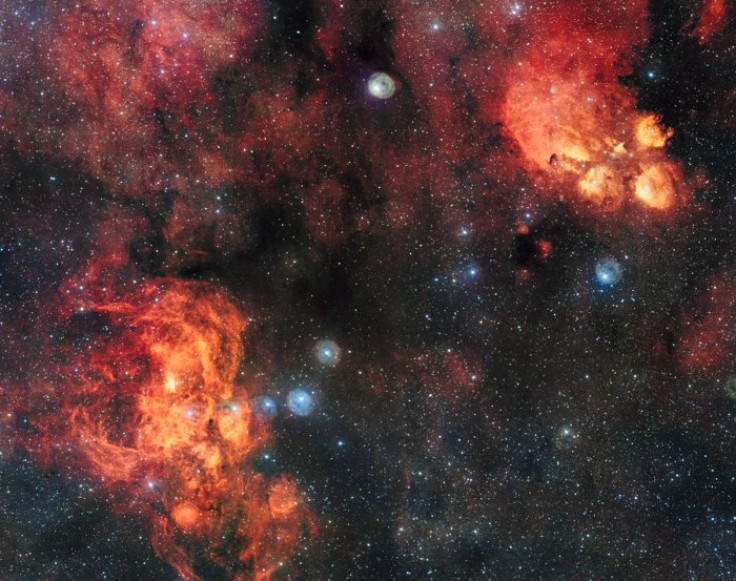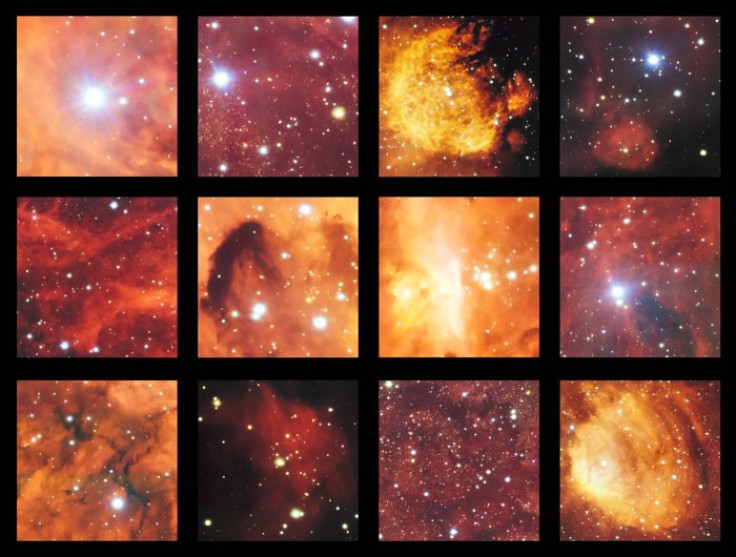Cat and a lobster meet in space 8,000 light years away
Two billion pixel image shows cosmic clouds of gas and dust in constellation of Scorpius.
A giant image of the Cat's Paw Nebula and the Lobster Nebula meeting in space has been released by the ESO. The two billion pixel image shows the two glowing clouds of gas and dust over distances of up to 8,000 light years.
The two nebulas, NGC 6334 and NGC 6357, were first spotted by British scientists John Herschel in 1837 but it was not until many years later that they were photographed and named.
Both the Cat's Paw (NGC 6334) and Lobster (NGC 6357) nebula sit in the constellation of Scorpius, towards the tip of its tail. The latest image – one of the biggest ever released by the ESO – was recorded as part of the Very Large Telescope Survey Telescope. It shows the tendrils of light-obscuring dust that form part of the nebulas.
The nebulae are regions of gas energised by the light from newly formed stars. These stars have masses 10 times that of the sun and they radiate ultraviolet light. When this light hits hydrogen atoms surrounding them, the cloud-like objects glow.

"Despite the cutting-edge instruments used to observe these phenomena, the dust in these nebulae is so thick that much of their content remains hidden to us," a statement from the ESO said. "The Cat's Paw Nebula is one of the most active stellar nurseries in the night sky, nurturing thousands of young, hot stars whose visible light is unable to reach us. However, by observing at infrared wavelengths, telescopes such as ESO's VISTA, can peer through the dust and reveal the star formation activity within."

© Copyright IBTimes 2024. All rights reserved.






